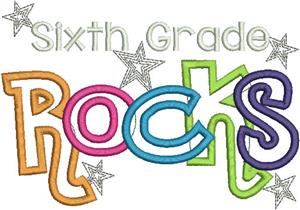-
6th grade is the year students begin to think more abstractly about mathematics. We will use a number of concrete tools to help us in our study of integers and absolute value, exponents and surface area, but students will begin relying heavily on knowledge acquired from K - 5th grade. It is expected that 6th grade students have a solid understanding of their math facts and strategies to allow them to solve more complicated math problems.
6th grade students will need to become much more reliant on understanding math vocabulary and math concepts already learned in previous grades. The concepts learned in 6th grade are brand new, and the focus is APPLYING what students know for new situations. 6th grade standards are the bedrock of middle and high school math; it is where students learn the basics for success in algebra, coordinate geometry, and advanced mathematics.
Curriculum Map - 6th Grade Math
- Statistics - surveys, dot plots, histograms, measures of center and variability, box plots, mean, median, mode, interquartile range
- Decimal and Fraction Operations - adding, subtracting, multiplying and dividing using fractions / mixed numbers and decimals
- Ratios - ratios, part to part, part to whole, equivalent ratios, calculating percents
- Unit Rate and Unit Price - using ratio knowledge to determine unit rate / unit price of events and cost
- Numerical and Algebraic Expressions - variables, constants, coefficients, combining like terms, properties of addition and multiplication
- Rational Numbers - integers, absolute value, plotting a number line, graphing on a coordinate plane (all quadrants)
- Equations and Inequalities - solving for variables, writing and solving one-step equations, graphing solutions on a number line
- Geometry - finding volume and surface area of polygons, decomposing nets of shapes to solve for surface area, graphing polygons on a coordinate plane


